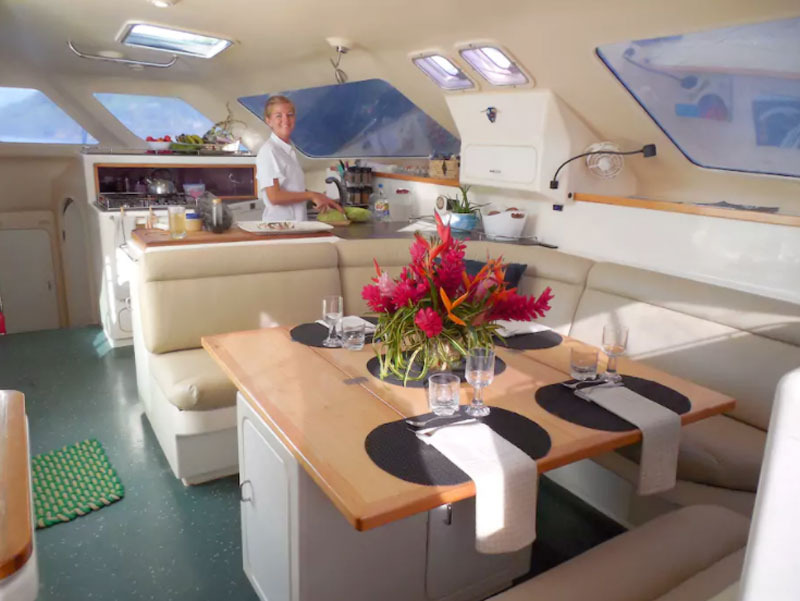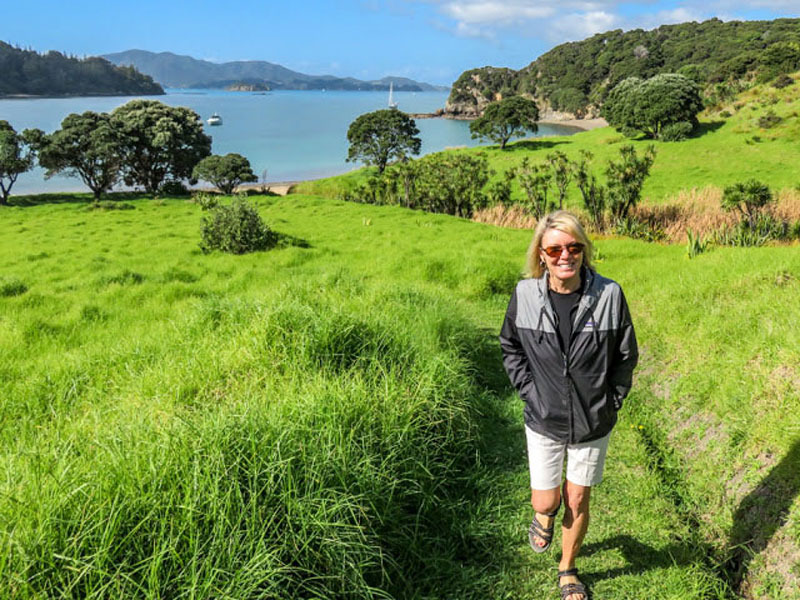
It’s a Nasty 1,200 Miles

©2017Latitude 38 Media, LLC
Among the potentially nastiest passages in the world of sailing is the one between New Zealand and Fiji or Tonga. The only place you can stop for protection on the 1,200-mile passage is Minerva Reef if you’re on your way to Tonga, and in heavy weather it’s not that comfortable.
The weather systems in the Southwest Pacific migrate from west to east, as they do in the States, and typically do so in five- to eight-day cycles. So you have to be lucky not to get hit by a weather system. And if your boat isn’t very fast, you can get hit by two.
Yes, weather forecasting is much better than it used to be, but it still can’t forecast accurately five or more days out, and it can’t prevent systems from moving through.
We’ve gotten reports from two California boats that have recently done the passage, and both have gotten clobbered.
Lewis Allen and Alexis Alexopolous left Opua, New Zealand, on their Redwood City-based Voyager 43 catamaran Quixotic in the middle of May, right after the South Pacific cyclone season supposedly ended. They had a quick trip — six days and 22 hours to cover 1,200 miles — but they paid a price.
“We are trying to remember another passage on our cat, or our previous boat, a Tartan 37 monohull, that was as uncomfortable but are coming up blank,” they write. “As such, we don’t have any plans to sail back to New Zealand anytime soon, as great as it is. As always, it was the seas that made it so uncomfortable. They were the perfect height and period to throw our cat around, and they were coming from many directions. We’ve had much more wind in the past, but with smaller and more orderly seas, and it wasn’t as bad.”
As if the passage from New Zealand hadn’t been bad enough, as soon as they got to Fiji they had to face the possibility of getting hit by two post-season cyclones. Fortunately, both whiffed.
You can read their entire report in the June 1 issue of Latitude 38.
The other couple who reported in are John and Debbie Rogers of the San Diego-based Deerfoot 62 Moonshadow.
“We left our dock at the marina in Opua on May 20 under clear skies and in calm conditions,” John reports. “By noon we were sailing in 25 knots and squalls, with rain and gusts to 30. An hour later it was consistently blowing more than 30 knots, and by sunset we’d seen 47 knots with about an hour of steady 40-ish winds. We reduced sail all the way down to a partially rolled out staysail and were clocking 9-13 knots. Over the night things settled down into the mid-20s as the wind began to back to southwest then south. The seas during that first afternoon were just wicked. Not so big, maybe 3-4 meters, but quite steep and close together.”
After four days of better, but not that much better, weather — lots of wind just above or below 30 knots — they were still 375 miles from Savusavu, sailing at 10-11 knots.

©2017Latitude 38 Media, LLC
Then there is Kiwi John Martin, who claims to have made the passage 42 times and only had one really bad experience, his first time. You can read his analysis of the passage and how to deal with it at www.noonsite.com.
